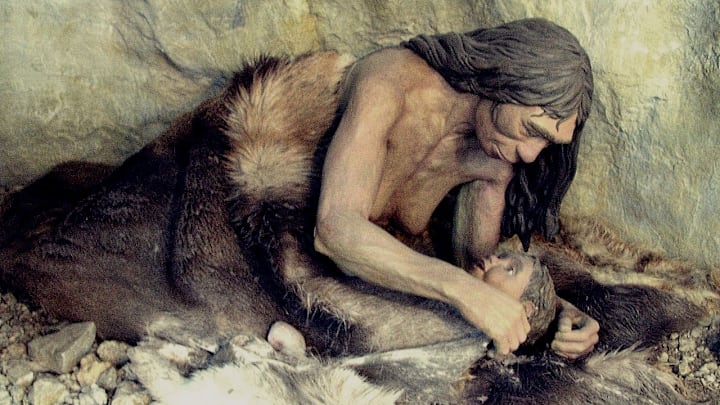Archeological evidence has long indicated that Neanderthals cared for sick and injured members of their communities. But experts disagree on whether these close relatives of Homo sapiens did so altruistically or transactionally, under the expectation that they might receive reciprocal care from such members in the future.
A new study offers compelling evidence, based on a Neanderthal child’s inner ear bone, that some Neanderthals were indeed driven by altruism. The study was published in the scientific journal Science Advances and headed by the University of Alcala paleoanthropologist Mercedes Conde-Valverde.

The bone, discovered at the Cova Negra archeological site in Valencia, Spain, in 1989, displayed abnormalities that would have resulted in hearing loss and disabling vertigo, among several other complications. “The only syndrome that is compatible with the entire set of malformation present in [the remains] is Down syndrome,” Conde-Valverde and co-authors write. Researchers believe the child’s condition made the prospect of receiving reciprocal care from this individual unlikely.
“Because of the demanding lifestyle of Neanderthals, including high levels of mobility, it is difficult to think that the mother of the individual would have been able to provide such care alone and also carry out normal daily activities over a prolonged period of time,” the authors continue. “It is likely, therefore, that the mother required the continuous help of other members of the social group, either for assistance in performing other daily tasks (or to relieve her from performing them) or to directly assist in providing the necessary care for the child, or both.”
The findings suggest that Neanderthals practiced collective caregiving and parenting without the expectation of reciprocity and that “both prosocial behaviors were part of a broader social adaptation of high selective value,” similar to that of our own ancestors.
The study also hints that the emergence of altruistic behaviors goes back further than previously expected, originating not with Homo sapiens but earlier on the evolutionary tree, possibly before Neanderthals and Homo sapiens diverged from a common ancestor and became separate species. On a deeper level, the study joins a growing body of research highlighting the sophisticated behavior of Neanderthals, reframing their outdated reputation as unintelligent cavemen wiped out by their culturally and technologically superior cousin, the modern human.
Read More Stories About Human Evolution
